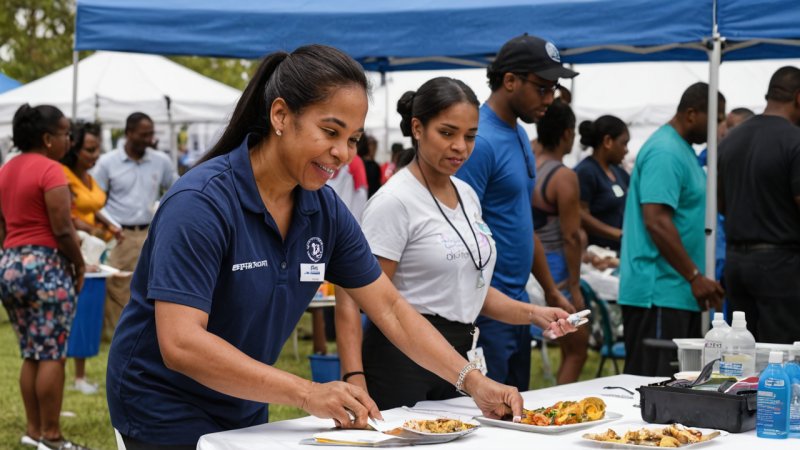Introduction
Health fairs are a fantastic way to bring communities together and promote health and wellbeing. In this article, you will learn how to effectively organize a health fair that not only raises awareness about health issues but also provides vital resources and services to your community. We will cover everything from planning and logistics to partnerships and engagement strategies.
Step 1: Define Your Goals and Objectives
Before diving into the planning process, it's crucial to define what you want to achieve with your health fair. Consider the following questions:
- What health issues are most prevalent in your community?
- What services do you want to provide?
- How many attendees do you expect?
Having clear goals will guide your planning and help you measure the success of your event.
Step 2: Assemble a Planning Team
Gather a group of dedicated volunteers or community members who are passionate about health and wellbeing. Your team should include individuals with diverse skills, such as:
- Event planning
- Marketing and communications
- Healthcare professionals
- Community leaders
Assign roles and responsibilities to ensure that all aspects of the event are covered.
Step 3: Choose a Suitable Location and Date
Select a location that is accessible to your community, such as a local park, community center, or school gym. Consider the following when choosing a date:
- Avoid major holidays or events that could affect attendance.
- Check for weather conditions if it's an outdoor event.
- Ensure that the venue is available and can accommodate your expected number of attendees.
Step 4: Engage Partners and Sponsors
Reach out to local health organizations, businesses, and nonprofits that can provide resources or sponsorship. Potential partners may include:
- Hospitals and clinics
- Health insurance companies
- Fitness centers
- Local government agencies
Collaboration can enhance the quality of services offered at your health fair.
Step 5: Plan Activities and Services
Decide on the types of activities and services you want to offer at your health fair. Consider including:
- Health screenings (blood pressure, cholesterol, glucose)
- Workshops on nutrition, fitness, and mental health
- Information booths from local health organizations
- Interactive activities for children and families
Ensure that you have enough volunteers to assist with each activity.
Step 6: Promote Your Health Fair
Effective promotion is key to a successful health fair. Utilize various channels to reach your audience:
- Social Media: Share event details on platforms like Facebook, Twitter, and Instagram.
- Flyers and Posters: Distribute them in local businesses, community centers, and schools.
- Local Media: Contact local newspapers and radio stations to announce your event.
Engage with your community to create excitement and encourage attendance.
Step 7: Execute the Event
On the day of the health fair, ensure that everything runs smoothly:
- Set up booths and activities early.
- Have a designated area for check-in and information.
- Ensure volunteers are aware of their roles and responsibilities.
- Provide refreshments and seating areas for attendees.
Be prepared to adapt to any unexpected challenges that may arise.
Step 8: Evaluate and Follow Up
After the event, gather feedback from attendees, volunteers, and partners to evaluate the success of your health fair. Consider the following:
- What went well?
- What could be improved for future events?
Document your findings and share them with your planning team and partners. This information will be invaluable for future health fairs.
Conclusion
Organizing a health fair takes careful planning and collaboration, but the positive impact on your community's wellbeing can be profound. By following these steps, you can create an event that not only educates but also empowers individuals to take charge of their health. Remember, even small actions can lead to significant changes in promoting health and wellbeing.






